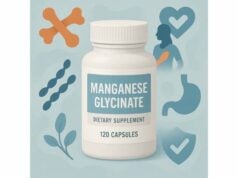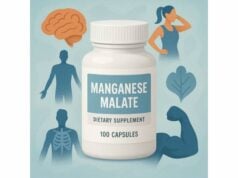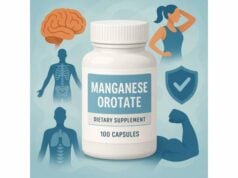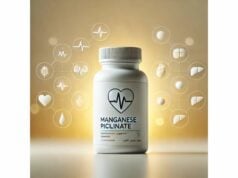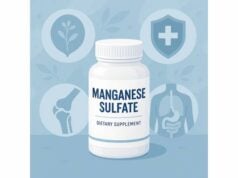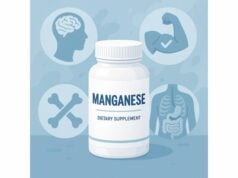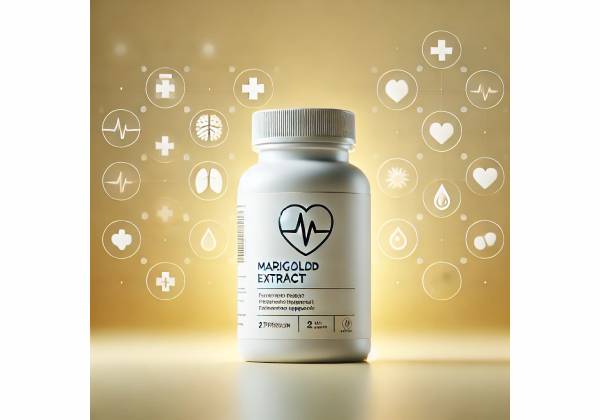
Marigold extract appears in two distinct forms that people often confuse. Tagetes erecta (often called Aztec or African marigold) is the primary commercial source of lutein and zeaxanthin, yellow carotenoids concentrated in the retina that support macular pigment and visual performance. Calendula officinalis (pot marigold) is a different plant used mostly on the skin: its triterpenoids, flavonoids, and essential oils show anti-inflammatory and wound-modulating activity in topical products like ointments and gels. You’ll see both sold as “marigold extract,” but they have different active compounds, uses, and dosing.
This guide explains the science behind each type, where the evidence is strongest (and where it’s not), practical daily use, realistic dosage ranges, safety flags, and how to choose quality products. You’ll walk away knowing when Tagetes-based lutein makes sense for eye health, how Calendula topicals fit into a skin-care or first-aid routine, and what to avoid.
Quick Overview
- Tagetes marigold provides lutein and zeaxanthin that support macular pigment and may slow age-related macular degeneration progression.
- Calendula topicals (2–10%) may speed epithelialization in certain acute wounds; results are mixed for chronic or burn wounds.
- Typical lutein dose: 10–20 mg/day with 2 mg/day zeaxanthin; Calendula ointment: 2–10% applied 2–3 times daily to intact skin around minor wounds.
- Safety caveat: avoid Calendula on deep/infected wounds; smokers should avoid beta carotene, not lutein/zeaxanthin.
- Avoid if allergic to Asteraceae (ragweed family) or if your clinician advises against carotenoid supplements in specific eye conditions.
Table of Contents
- What is marigold extract?
- Do marigold extracts really work?
- How to use marigold extract day to day
- How much and how often to take
- Side effects and who should avoid it
- What to look for in quality and evidence
What is marigold extract?
“Marigold” can mean two different botanicals, and the distinction matters because their active compounds, benefits, and dosing are not the same.
Tagetes erecta (Aztec/African marigold). This species is the industrial source of lutein and zeaxanthin, the xanthophyll carotenoids that accumulate in the macula, the central retina responsible for fine detail and color vision. Tagetes petals are processed into an oleoresin rich in lutein esters (often lutein dipalmitate). Manufacturers then either standardize the ester content or saponify (hydrolyze) it to “free lutein.” Labels usually report “lutein (free lutein equivalents)” even when the raw input is an ester, so consumers can compare doses directly across brands. In finished products, lutein frequently appears alongside zeaxanthin (and sometimes meso-zeaxanthin) because these pigments co-localize in the macula. Lutein and zeaxanthin are fat-soluble and are better absorbed when taken with a meal containing fat.
Calendula officinalis (pot marigold). This is a topical botanical. Its flowers contain triterpenoids (e.g., faradiol esters), flavonoids, saponins, and volatile oils. Extracts (aqueous, ethanolic, or CO₂) are formulated into ointments, creams, gels, or tinctures. On skin, Calendula appears to modulate inflammation, support granulation tissue, and influence re-epithelialization dynamics. It’s popular in first-aid balms, post-procedure skincare, and perineal or postoperative care protocols. Unlike Tagetes lutein, Calendula is not a vision supplement; its role is primarily dermatologic.
Forms you’ll see on labels
- Tagetes (lutein/zeaxanthin): softgels, capsules, gummies; often “10 mg lutein + 2 mg zeaxanthin” per serving; sometimes marketed as “AREDS2-compatible.”
- Calendula: ointments/creams at 2–10% extract, gels for delicate skin, tinctures for diluted application; also appears in lip balms and post-sun products.
Mechanisms in plain language
- Lutein/zeaxanthin (from Tagetes): act as optical filters for blue-rich light and antioxidants within photoreceptor/retinal pigment epithelium membranes. Over time, sufficient intake increases macular pigment optical density (MPOD), which can improve contrast sensitivity and reduce glare sensitivity.
- Calendula (topical): triterpenoids and flavonoids downshift inflammatory signals, may reduce local oxidative stress, and can support the matrix changes needed for tissue remodeling. Effects appear more consistent in uncomplicated acute wounds than in complex, infected, or chronic wounds.
Why the naming confusion matters. “Marigold extract” on a product page could refer to lutein for eyes or Calendula for skin. Read the species name (Tagetes vs Calendula) and the active markers (mg lutein/zeaxanthin vs percent Calendula extract) before buying or dosing.
Do marigold extracts really work?
For eye health (Tagetes lutein/zeaxanthin). The best-studied use of marigold extract is as a source of lutein and zeaxanthin. In large, long-term human research on age-related macular degeneration (AMD), formulas that replace beta carotene with lutein and zeaxanthin have shown benefits for slowing AMD progression, with added safety advantages for former smokers compared with beta carotene–containing formulas. Beyond disease progression, multiple clinical studies show that lutein (typically 10–20 mg/day) with zeaxanthin (2 mg/day) can raise macular pigment, and many trials report improvements in visual performance metrics such as contrast sensitivity and glare recovery after sustained intake. Effects are not instantaneous; retinal carotenoids build up gradually over 8–12 weeks and stabilize with continued use.
It’s equally important to note where the evidence is neutral: adding lutein/zeaxanthin did not produce a meaningful overall effect on cataract surgery rates in the large trials. That doesn’t negate benefits for macular function; it simply clarifies scope—lutein/zeaxanthin are not a cataract cure.
For skin and wound care (Calendula officinalis). Evidence for Calendula is promising yet mixed, and context matters:
- Acute, uncomplicated wounds: Randomized clinical data show faster epithelialization and shorter healing time with standardized Calendula ointments compared with control care in certain settings (e.g., digital pulp injuries).
- Post-surgical use: Small randomized trials (e.g., cesarean wounds) report improved healing scores with Calendula ointment applied on a schedule versus usual care.
- Chronic wounds, burns, radiation dermatitis: Findings are variable. Systematic reviews conclude that Calendula may help in some scenarios but does not consistently outperform standard comparators. Heterogeneity in extract type, concentration, and wound complexity likely drives mixed results.
What this means in practice
- For vision: Marigold-derived lutein/zeaxanthin are evidence-aligned for people with AMD risk or for those seeking performance gains like better contrast in glare-prone environments. Benefits accrue with daily, long-term use and work best as part of comprehensive eye care (sunglasses, diet, follow-up exams).
- For skin: Calendula topicals are reasonable adjuncts for minor or post-procedure wounds when intact skin and appropriate wound hygiene are maintained. They are not substitutes for medical management of deep, infected, or necrotic wounds.
Expectation setting
- Lutein/zeaxanthin: think “steady build”—subtle improvements in functional measures and a role in AMD progression risk reduction over years, not days.
- Calendula: think “supportive topical”—potentially faster surface healing in straightforward scenarios; inconsistent effects in complex wounds.
How to use marigold extract day to day
A practical plan starts with clarifying your goal, then matching the right marigold and right format to that goal.
Goal: support macular health or visual performance (Tagetes lutein/zeaxanthin)
- Choose a daily dose you can keep up with: most people do well with 10–20 mg lutein + 2 mg zeaxanthin. If you already take a vision formula, check whether it matches these amounts and whether it uses lutein (free) or lutein esters (often listed as free-lutein equivalents).
- Take with meals that contain some fat (e.g., eggs, olive oil, nuts). This can improve absorption.
- Keep the rest of your eye-care basics: routine eye exams; UV/blue-light exposure management (sunglasses when appropriate); a diet with leafy greens (lutein), orange/yellow produce, fish, and nuts; avoid smoking.
- Give it time: expect 8–12 weeks before you notice changes in glare or contrast tests; pigment gains plateau with steady intake.
- Performance contexts: drivers, outdoor workers, and screen-focused professionals often report less glare fatigue over time. Keep expectations realistic—supplements complement, not replace, good ergonomics and lighting.
Goal: faster recovery and calmer skin around minor wounds (Calendula)
- Pick the right product: look for 2–10% Calendula extract in ointments or creams from reputable brands. For delicate areas, gels or lighter creams may feel better than waxy ointments.
- Prepare the area: clean with mild soap and water; pat dry. If the wound is deep, bleeding heavily, showing pus, or exposing tissue, seek medical care first.
- Apply a thin layer 2–3 times daily unless your clinician says otherwise. Don’t occlude tightly unless instructed; light dressings that permit airflow are often preferable for uncomplicated wounds.
- Patch test if you have ragweed or daisy-family allergies (Asteraceae). Discontinue if you notice a rash, itching, or worsening redness.
- Combine with fundamentals: pressure offloading when relevant (fingers, heels), adequate protein intake, and glucose control if you have diabetes.
Common mistakes and fixes
- Mistake: Buying “marigold extract” without checking the species.
Fix: Confirm Tagetes erecta for lutein/zeaxanthin; Calendula officinalis for skin. - Mistake: Mega-dosing lutein on an empty stomach.
Fix: Take with fat; more isn’t always better—stay in the 10–20 mg range unless a clinician advises otherwise. - Mistake: Using Calendula on infected or deep wounds.
Fix: Seek medical care; use Calendula only as an adjunct for minor or clinician-cleared wounds. - Mistake: Expecting overnight vision changes.
Fix: Commit to months, not days. Track subjective changes (night glare, screen fatigue) and keep regular eye checkups.
How much and how often to take
Because “marigold extract” spans two botanicals with different uses, dosing splits into ocular carotenoids (Tagetes) and topical care (Calendula).
Tagetes lutein and zeaxanthin (for eyes)
- Everyday maintenance: 10–20 mg lutein/day plus 2 mg zeaxanthin/day. This mirrors common clinical protocols and aligns with widely used vision formulas.
- AMD-focused regimens: Many clinicians recommend the AREDS2-style composition for those with intermediate AMD or at risk, using 10 mg lutein + 2 mg zeaxanthin alongside vitamins C and E, zinc, and copper. Talk with your eye-care professional to confirm fit and to avoid duplicative dosing.
- Timing: Take once daily with a meal containing fat. Morning or evening is fine; consistency is what matters.
- Duration to effect: 8–12 weeks to meaningfully raise MPOD; benefits plateau with steady intake.
- Lutein esters vs free lutein: Esters are hydrolyzed in digestion to free lutein; labels typically express dose as free lutein equivalents. If a product lists “lutein esters (20 mg),” confirm the free lutein equivalent (commonly indicated) to avoid under- or over-estimating your intake.
- Special populations: Children and pregnant or breastfeeding individuals should not exceed food-like intakes without clinician guidance. Carotenoids are generally considered safe, but targeted supplementation in these groups warrants professional oversight.
Calendula officinalis (for skin)
- Ointments/creams: 2–10% Calendula extract, applied 2–3 times daily on clean, intact skin around minor wounds or as directed post-procedure.
- Duration: Use for several days after injury or until re-epithelialization; in post-surgical settings (e.g., cesarean), schedules typically run 7–10 days per protocol.
- Oral Calendula: Not standard. Small studies exist, but evidence is insufficient to recommend routine oral dosing for wound care; stick to topical formulations unless a clinician advises otherwise.
- Combination care: Calendula may appear in multi-ingredient balms (e.g., with honey or panthenol). While pleasant, combinations can complicate attribution. If you want to gauge Calendula itself, pick a single-active product.
Storage and stability
- Lutein/zeaxanthin: Light and oxygen degrade carotenoids. Keep bottles sealed, away from heat and direct sunlight. Do not store in the car or near windows.
- Calendula: Ointments are relatively stable; creams may separate or lose potency with heat. Keep caps tightly closed; discard products that smell rancid or change color markedly.
How to evaluate progress
- Vision: Subjective metrics (night glare, contrast on rainy drives, screen fatigue) and objective measures (MPOD testing, contrast sensitivity in clinic) after 8–12 weeks.
- Skin: Look for reduced redness and exudate, steady edge advancement, and no new pain or odor. If a wound stalls, seek medical review.
Reasonable upper bounds
- Lutein/zeaxanthin: There is no formal Tolerable Upper Intake Level; intakes up to 20–40 mg/day of lutein have been used short-term. Higher doses may cause carotenodermia (yellowing of skin) and offer diminishing returns; stay within 10–20 mg lutein unless supervised.
- Calendula: Stick to label directions; higher concentrations are not necessarily better and may irritate sensitive skin.
Side effects and who should avoid it
Tagetes lutein/zeaxanthin (oral)
- Common tolerance: Generally well tolerated at 10–20 mg lutein + 2 mg zeaxanthin. Possible mild GI upset in sensitive users when taken without food.
- Skin discoloration: Very high carotenoid intakes can cause yellow-orange skin tint (carotenodermia), harmless and reversible by lowering intake.
- Smokers and beta carotene: The concern about increased lung cancer risk applies to beta carotene in smokers or former smokers, not to lutein/zeaxanthin. Many modern vision formulas removed beta carotene in favor of lutein/zeaxanthin for this reason.
- Drug interactions: None of major concern at common doses. Carotenoids may theoretically compete for absorption with certain medications or other fat-soluble compounds; spacing doses with other supplements can help if you notice GI issues.
- Pregnancy/lactation: Food-based carotenoids are normal; targeted supplements should be clinician-guided.
Calendula officinalis (topical)
- Allergy risk: Calendula belongs to the Asteraceae family (ragweed, daisies). If you have known ragweed allergies, patch test first. Discontinue if rash, itching, or wheals develop.
- Irritation: High concentrations or fragranced formulations may irritate sensitive skin. Choose unscented medical-style ointments when using near surgical sites.
- Inappropriate uses: Do not apply on deep, infected, necrotic, or highly exudative wounds without medical supervision. Calendula is adjunctive, not definitive therapy.
- Oral use: Insufficient evidence for routine oral Calendula to heal wounds. Avoid unless prescribed.
Who should avoid or use with caution
- People with Asteraceae allergy (Calendula).
- Individuals with complex ocular disease should coordinate with their ophthalmologist before adding or changing supplements.
- Those on strict perioperative protocols should confirm that Calendula is permitted; some surgeons prefer specific, tested products to minimize confounders in healing.
- Children, pregnancy, breastfeeding: stick to food-like intakes of carotenoids and clinician-approved topicals.
When to seek medical care promptly
- Wound worsens after 48–72 hours, develops fever, or shows spreading redness, foul odor, or drainage.
- Sudden vision changes, new flashes/floaters, or distorted central vision. Supplements are not a substitute for urgent eye evaluation.
What to look for in quality and evidence
For Tagetes-based lutein/zeaxanthin
- Transparent standardization: Look for labels that specify “lutein (free lutein equivalents)” and list zeaxanthin clearly. If a product boasts “40 mg marigold extract” without disclosing the mg lutein, skip it.
- Evidence-aligned dosing: Target 10–20 mg lutein + 2 mg zeaxanthin. “Proprietary blends” that hide amounts rarely serve you.
- Formulation matters less than consistency: Free vs ester both work; absorption is improved with dietary fat. A softgel with oil is convenient, but a powder capsule taken with a fatty meal can be equivalent.
- Complementary nutrients: Vision formulas often include vitamins C and E, zinc, and copper. Ensure the total zinc across your day stays reasonable; many eye formulas use zinc 25–80 mg as part of legacy designs—ask your clinician which strength fits your case.
- Quality seals: Third-party testing (e.g., USP, NSF, Informed Choice) can reduce risk of mislabeling and contamination.
For Calendula topicals
- Defined extract strength: Choose 2–10% Calendula from brands that identify Calendula officinalis and reference a standardized extract rather than simply “herbal complex.”
- Simple excipients: Fewer fragrances and dyes reduce irritation. For post-procedure use, fragrance-free ointments are safer bets.
- Intended use clarity: Products should specify whether they are for minor wounds, post-procedure, or cosmetic soothing. Marketing claims like “heals any wound fast” are red flags.
- Packaging and hygiene: Tubes reduce contamination compared to wide-mouthed jars. If using jars, wash hands before application.
Interpreting the evidence like a pro
- For eyes: Large-scale, long-term analyses support lutein/zeaxanthin as part of a strategy to slow AMD progression after beta carotene was removed, with better safety in former smokers. Shorter trials commonly show functional visual improvements (contrast sensitivity) after months. No strong effect on cataract surgery risk was observed in the major trials—set expectations accordingly.
- For skin: A heterogeneous trial landscape means Calendula is promising for uncomplicated acute wounds and certain post-surgical contexts, but results are inconsistent for burns and chronic wounds. If you choose Calendula, use it where it is most likely to help—minor wounds under good local care—and in partnership with medical advice for anything complex.
Checklist before you buy
- Have you matched the species (Tagetes vs Calendula) to your goal (eyes vs skin)?
- Is the dose stated clearly (mg lutein/zeaxanthin or % Calendula)?
- Are there third-party certifications or a reputable manufacturer?
- For eyes, does the formula avoid beta carotene if you are a current/former smoker?
- For skin, will the base (ointment vs cream vs gel) suit the location and sensitivity of the area?
If you can answer “yes” to those, you’re positioned to use marigold extract strategically—not just hopefully.
References
- Long-term Outcomes of Adding Lutein/Zeaxanthin and ω-3 Fatty Acids to the AREDS Supplements on Age-Related Macular Degeneration Progression: AREDS2 Report 28 2022 (Cohort Follow-up of RCT)
- Bioavailability of Lutein from Marigold Flowers (Free vs. Ester Forms): A Randomised Cross-Over Study to Assess Serum Response and Visual Contrast Threshold in Adults 2024 (Human Crossover)
- A systematic review of Calendula officinalis extract for wound healing 2019 (Systematic Review)
- Treatment of acute wounds in hand with Calendula officinalis L.: A randomized trial 2022 (RCT)
- The impact of calendula ointment on cesarean wound healing: A randomized controlled clinical trial 2018 (RCT)
Medical Disclaimer
This content is educational and does not replace personalized medical advice. Always consult a qualified clinician or ophthalmologist before starting supplements for eye disease, and a healthcare professional before applying any topical product to surgical sites or complex wounds. Do not use Calendula to self-treat deep, infected, or nonhealing wounds. If you experience sudden vision changes, eye pain, or signs of wound infection, seek urgent care.
If this guide helped you, please consider sharing it on Facebook or X (formerly Twitter), or with someone who might benefit. Your support encourages us to keep producing careful, people-first health explainers.

